Bellows
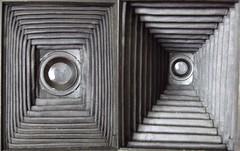
Left: folded bellows of a folding camera seen through
opened camera back. Right: same bellows unfolded
A bellows[1] is a lightproof tube, rectangular in section, made from an opaque, flexible material (leather, leatherette, vinyl, etc.), with lateral folds that allow it to retract or extend in length.
Bellows are used in several ways:
- They are a permanent part of the body of some cameras.
- A bellows is also an accessory for close-up photography, essentially an extension tube of variable length.
- A bellows lens hood (or compendium hood) is a hood of adjustable depth, used with view cameras or sometimes with SLRs.
Contents
Bellows as a permanent part of the camera
Compactness
The simplest use of bellows is to achieve compactness in a folding camera. The bellows extend to form part of the lightproof body of the camera while in use, and retract into a very compact size inside the rigid part of the body when the camera is folded.
Focusing
The variable extension of the bellows is used to provide the focusing in some cameras. This is most familiar as a feature of view cameras, with a ground glass screen, but bellows focusing is also used with rangefinder cameras (for example the Speed Graphic) and SLRs such as the Mamiya RB67. Some folding cameras use bellows focusing with no other aid than a scale fixed alongside the lens standard.
Bellows-focusing cameras usually have a baseboard with rails upon which the lens standard moves (whereas most folding cameras that use the bellows just for compactness have instead a folding strut mechanism associated with the front door, which serves to hold the lens standard in a fixed position when the camera is unfolded).
Early SLR cameras such as the Soho Reflex use a rack-and-pinion system instead of a baseboard and rails, with a pair of toothed racks attached to the front board of the camera. The principle is the same however; because of the flexibility of the bellows, some rigid mechanical system is needed to hold it at the right extension.
Camera movements
The most advanced use of bellows is to allow camera movements: rise and fall, left and right shift, tilt and swing. These movements allow advanced control of the plane of focus, and of perspective. Again, camera movements are most frequently a feature of view cameras, but rise in particular is often available on other bellows cameras, even in some where there is no way to judge the effect.
Bellows accessories
As an optional part of a camera with exchangeable lenses, a bellows can extend the lenses' capabilities to make images of small objects at small distances by extending the lens tube's length. Such a bellows can be fixed at any length as the length of its guide rail(s) allow.
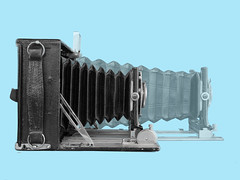
|
| Principle of Double Expansion Bellows image by Dirk HR Spennemann (Image rights) |

|

|
The average folding camera unfolds its bellows to a fixed length. Some models with exchangeable lenses allow different bellows expansion lengths. Some sophisticated amateur cameras allow tilts and shifts, but in most amateur cameras the bellows is just optimized for the compactness of the folded camera.

|
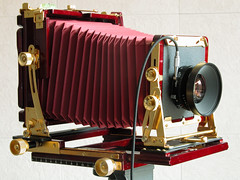
|
| Bellows for macro photography with modern SLRs are geometrically more like accordion bellows than like typical built-in camera bellows. That means a macro bellows has an equal diameter throughout its length. |
The bellows of professional view cameras are also accordion-bellows-like or with only little reduction of diameter towards the lens mount plate. That gives these bellows better flexibility for tilting and shifting the lens to reach optimal image geometry and sharpness plane. But some amateur plate cameras offer such lens board flexibility too, despite of non-accordion bellows geometry. |
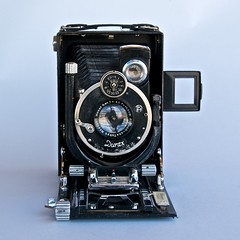
|
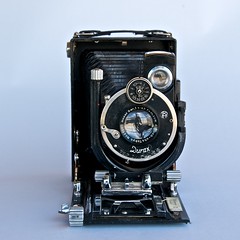
|
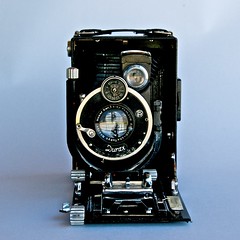
|
|

|
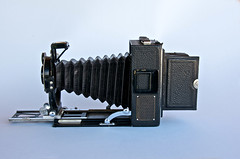
|
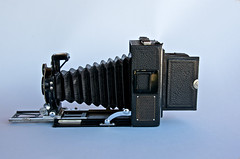
|
|
| Lens board movements Konishiroku Lily, 6.5×9cm with Hexar Ser.1 10.5cm f/4.5 lens in Durax shutter, Images by Dirk HR Spennemann (Image rights) | |||

|
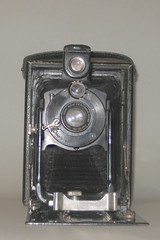
|
| lens board centered | lens board raised |
Notes
- ↑ Bellows is both the singular and the plural.